This is a rosemary sea, based on "gifts and I enjoy myself."
Founded in 1862 (Bunkyu 2), we visited Funasa Nihonbashi, a long-established Tsukudani company.
Mr. Funasa's history will be described at a later date, and this time I would like to introduce the products of the shop centered on Tsukudani.
It's a very fragrant tsukudani.
Mr. Yu Miyauchi (Yuu Miyauchi, General Manager of Nihonbashi Funasa Co., Ltd.
All prices are tax-included. Click enlarge the image to see.
Then...
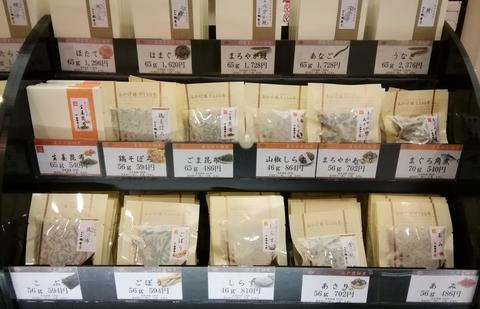
Corner of Tsukudani
The lower part is Edomae Tsukudani.
From the left, kelp 56g 594 yen, burdock 56g 594 yen, whitebait 46g 810 yen, clam 56g 702 yen, Ami 56g 486 yen
"Edomae Tsukudani" is dry in Edomae since its inception.
The aged sauce gives a unique depth, and you can feel the elegant spiciness and good aftertaste.
It goes well with white rice and ochazuke.
The upper and middle rows are mellow tsukudani
From the middle, left, ginger kelp 65g 540 yen, chicken burdock 56g 594 yen, sesame kelp 65g 486 yen, pepper shirasu 46g 864 yen, mellow clam 56g 702 yen, tuna corn 70g 540 yen
From the upper and left, scallop 1,296 yen, hamaguri 1,620 yen, mellow eel 1,728 yen, eel 1,728 yen, eel 2,376 yen each 65g
"Maroka Tsukudani" is moderately sweet and spicy according to modern tastes.
It is a tsukudani with low salt content while keeping the technique since its founding.
It is made with a recipe that reduces the taste of soy sauce and makes the mouthfeel.
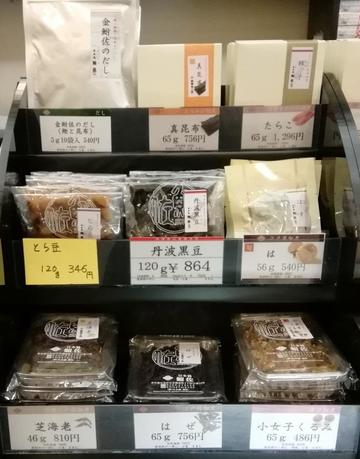
The corner following Tsukudani
The lower rows are all Edomae Tsukudani.
From the left, turf shrimp 46g 810 yen, haze 65g 756 yen, small girls (Konago) walnut 65g 486 yen
From the middle stage, from the left, 120g 346 yen, Tamba black beans 120g 864 yen
On the right is Edomae Tsukudani, 56g, 540 yen.
Upper, center and right are mellow Tsukudani, Chuo Shinkombu 65g 756 yen, right Tarako 65g 1,296 yen
5g10 bags of 540 yen (bonito and kelp) 5g10 bags
The dashi used in the production of Tsukudani is reproduced in a tea bag.
Put tsukudani on rice and add this dashi to make "bubuzuke".
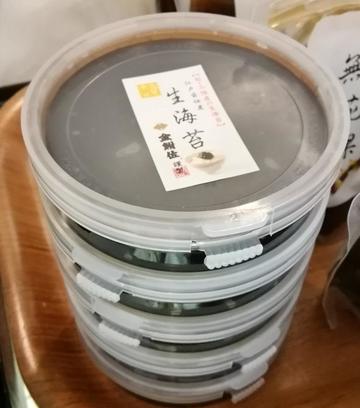
Edomae Tsukudani raw seaweed 85g 756 yen
Made from raw seaweed of natural cold seaweed from Tohoku Sanriku, it is finished to make it fresh and dry.
It's a fresh moss. Limited-time product from late December to March.
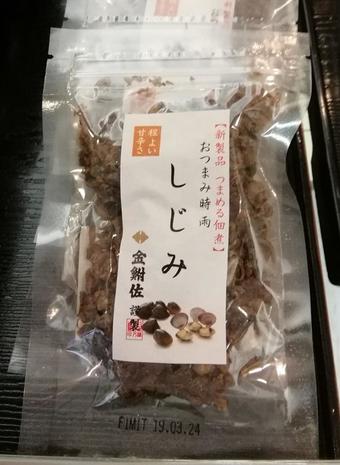
Tsukudani tidbits Toddler 40g, 378 yen
It's a new product. Moderate sweetness.
Shijimi is cooked with plenty of ginger.
Light seasoning is perfect for sake tidbits or snack.
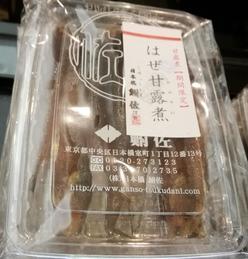
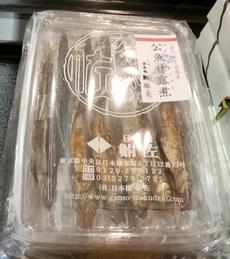
Left: 87g, 864 yen, right: pond smelt Kanroni 84g, 864 yen
pond smelt is a seasonal product from December to February.
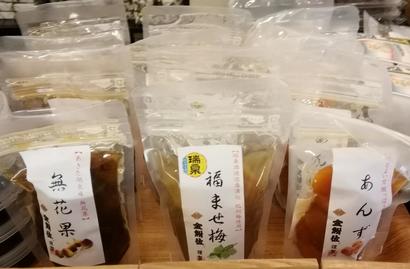
3 kinds of simmered fruits
Left: 110g 486 yen of figs from Akita Koto.
Central: Plum 100g 486 yen
It is made from Okinawa's Mizuizumi Sake Brewery Awamori Pickled Kishu plum.
It is cooked thoroughly over thick heat so that it does not collapse.
Right: Moderate sweet and sour apricot 100g 486 yen
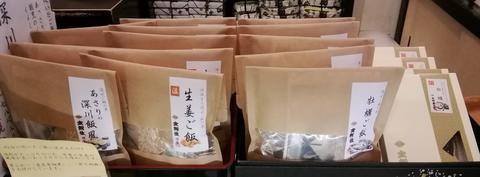
Three kinds of mixed rice from the left
Clam Fukagawa rice style, ginger rice, oyster rice
Instead of mixing it with rice and cooking, just mixing it with the cooked rice is easy.
It also comes with soft red kelp tsukudani and roasted sesame.
Right, mellow tsukudani oyster
Oysters are limited to the period from November to February, and are now in season.
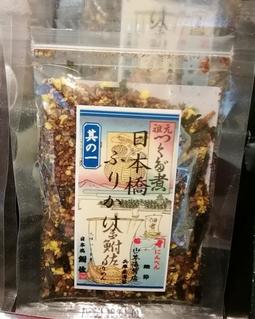
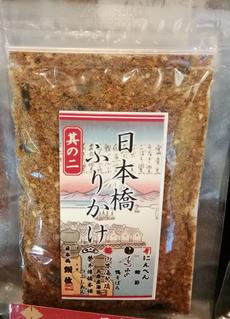
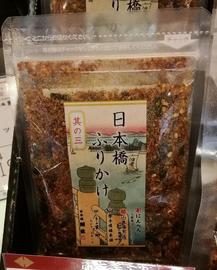
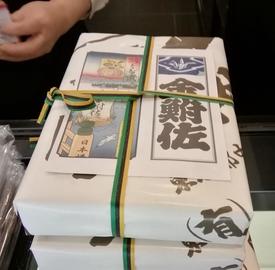
Upper left: Nihonbashi Sprinkle Part 130g 410 yen
This is a collaboration product of three long-established stores in Nihonbashi, pretending to commemorate the 100th anniversary of the Nihonbashi Bridge in 2011.
The basic materials are Niben's bonito flakes, Yamamoto-noriten's seaweed, and Nihonbashi Funasa's Chirimen Crepe.
Upper right: Nihonbashi Sprinkle Part 2 30g 410 yen
Niben's bonito flakes, Yamamoto-noriten's seaweed, and Nihonbashi Funasa's shrimp.
Toriyasu Ryogokubashi's duck meat soboro has been added to these three stores in "Part 1".
In addition, the special seasoning sauce uses the crushed bean paste of Eitaro Sohonho as a secret ingredient.
Lower left: Nihonbashi Sprinkle Part 330g 464 yen
After all, Ninben's bonito flakes, Yamamoto-noriten's seaweed, and Nihonbashi Funasa's shrimp.
To this, we added Tenkasu of Hannosuke Kaneko, a popular Tendon specialty store in Nihonbashi.
In addition, the secret taste of the specially made seasoned sauce, Eitaro Sohonho's crushed bean paste is the same.
To finish this, Hannosuke Kaneko's special tempura bowl soup is also added.
Lower right: Nihonbashi sprinkle 3-piece set 90g 1,188 yen
It is a set of 1 to 3 each of Nihonbashi Furikake.
It's cheaper as a set.
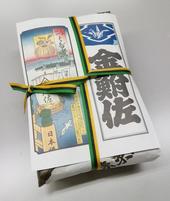
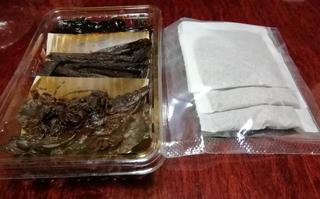
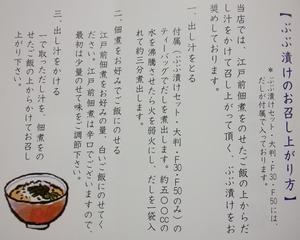
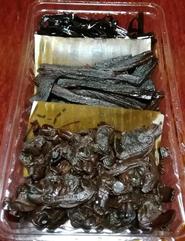
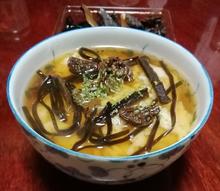 Bubu pickling set 110g Normally 1,242 yen
Bubu pickling set 110g Normally 1,242 yen
On this day, it was sold at 1,080 yen as a special price to visit the main store.
(From the back) Kelp, burdock, clam tsukudani. It comes with kelp and bonito soup stock.
This is the food lipo of the Rosmari family.
"The flavors of clams, burdock and kelp are solid and complement each one.
The soup stock is also matched and delicious. It tastes rich, so you just need to put it on a little bit.
It's an old-fashioned taste."
・・Here is an introduction of the gift set.
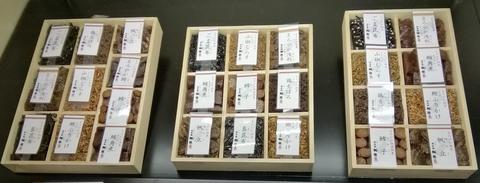
Left: Assorted 10 kinds of mellow Tsukudani paulownia boxes N-5 406g 6,480 yen
Central: Assorted 9 kinds of mellow Tsukudani Kiriori folded N-4 364g 5,400 yen
Right: Assorted 8 kinds of mellow Tsukudani Kiriori folded N-3 322g 4,860 yen

Left: 8 kinds of Edomae Tsukudani cedar folded 361g 5,400 yen
Right: Assorted 5 kinds of Edomae Tsukudani cedar folded 227g 3,240 yen
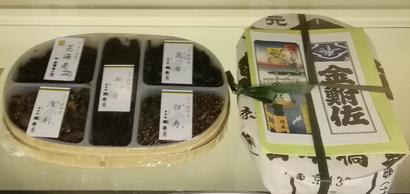
Aggregation of music (Magemono) Large format J-3 175g 2,160 yen
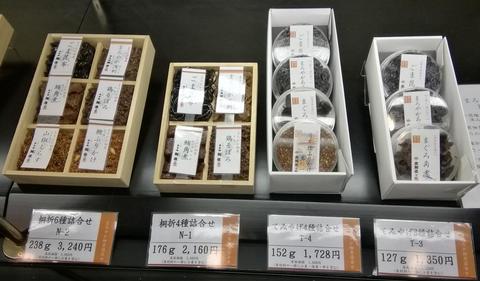
From the left, mellow Tsukudani Kiriori 6 kinds of assortment N-2 238g 3,240 yen
Assorted 5 kinds of mellow Tsukudani Kiriori folded N-1 176g 2,160 yen
Assortment of 4 kinds of souvenirs T-4 152g 1,728 yen by mellow Tsukuda boiled
Assortment of 3 kinds of souvenirs T-3 127g 1,350 yen by mellow Tsukuda boiled
It seems that the 6 kinds of assortment on the left is the most popular.

Left: Special selection Tsukudani cedar seal box 12 kinds of assortment S-3 503g 10,800 yen
Central: Specially selected Tsukudani cedar seal box 8 kinds of assortment S-2 341g 7,344 yen
Left: Special selection Tsukudani cedar seal box 6 kinds of assortment S-1 257g 5,400 yen
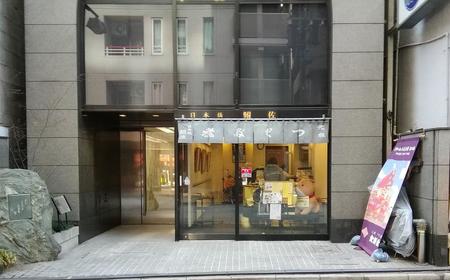
Nihonbashi Funa Samoto Store
1-12-13, Nihonbashimuromachi
It is a 3-minute walk from Exit A4 of Mitsukoshimae Station on the Tokyo Metro Ginza Line and Hanzomon Line.
03-3270-2735
Business hours Monday to Saturday 10:00-18:00
Holidays from 11:00 to 16:00
Regular holiday Sunday (Open on Sunday in December)
Nihonbashi Mitsukoshi Branch
1-4-1 Nihonbashi Muromachi Mitsukoshi Nihonbashi Main Store
03-3241-3311 (large representative)
Business hours and regular holidays The same applies to department stores.
Click here for the website of Mr. Funasa Nihonbashi.
⇒ http://www.ganso-tsukudani.com
![]()
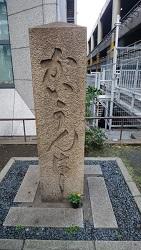
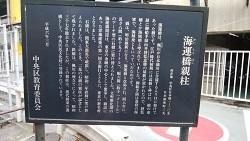
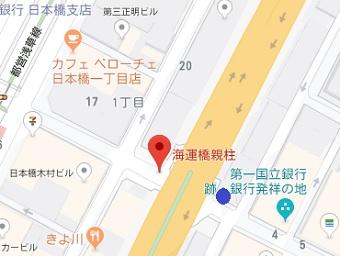
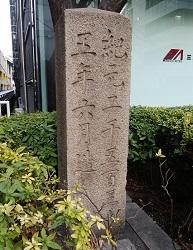
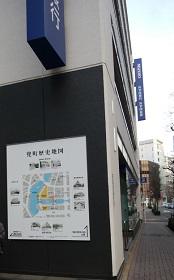
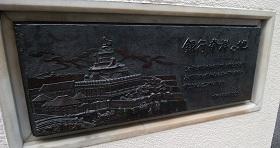
![]() Tokyo
Tokyo![]() ".
".![]() in
in ![]() Tokyo again.
Tokyo again.![]()























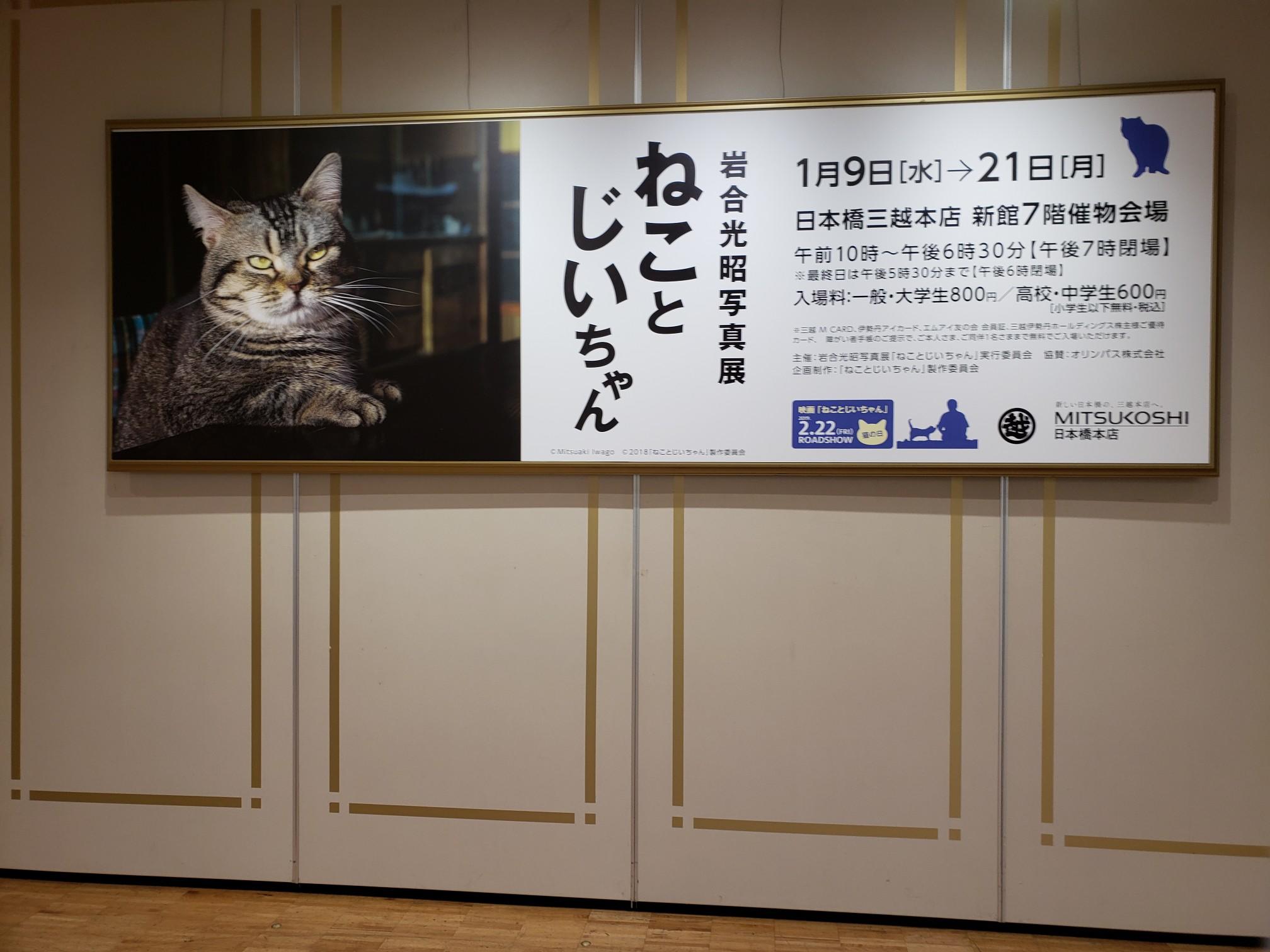
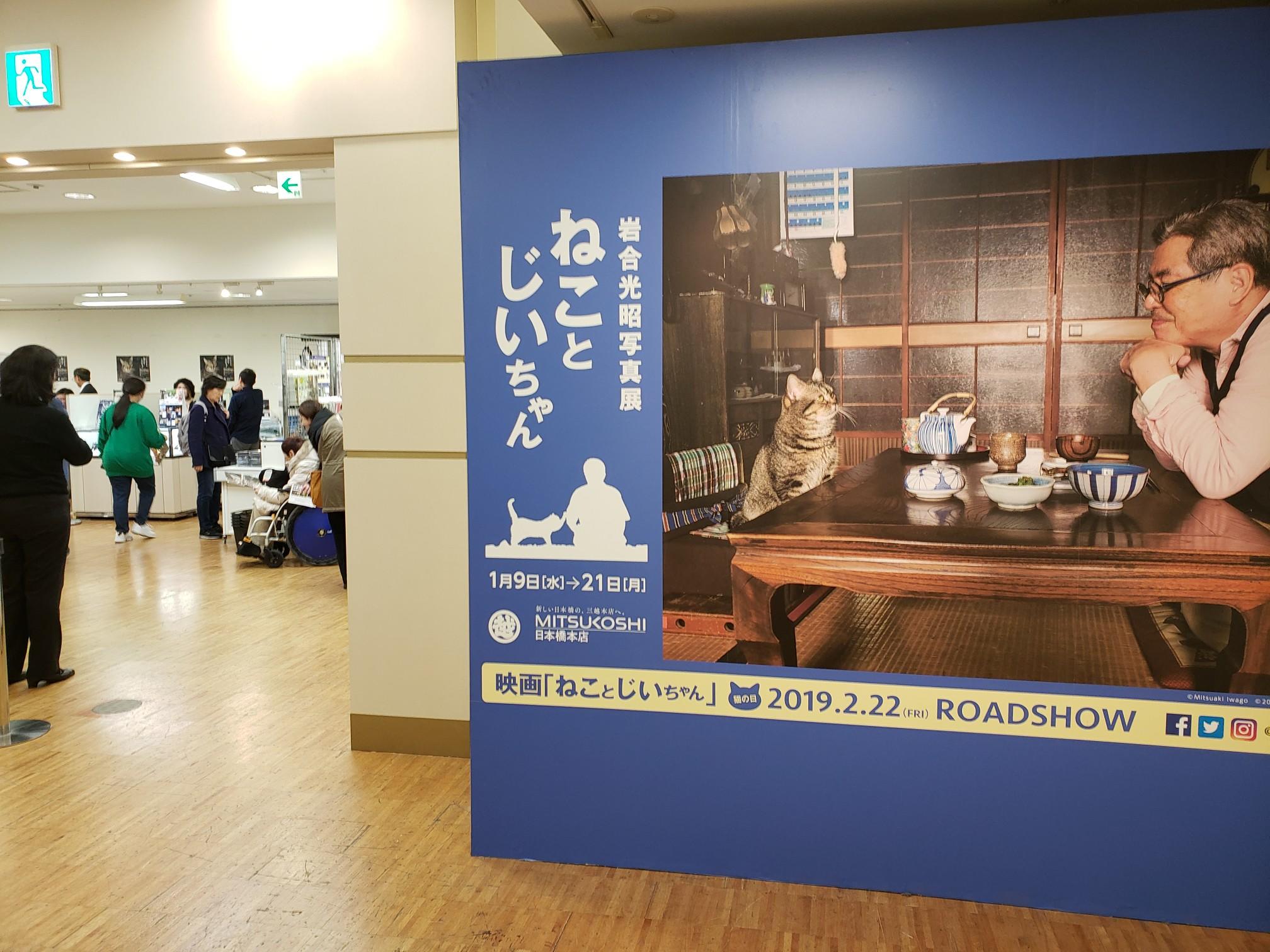
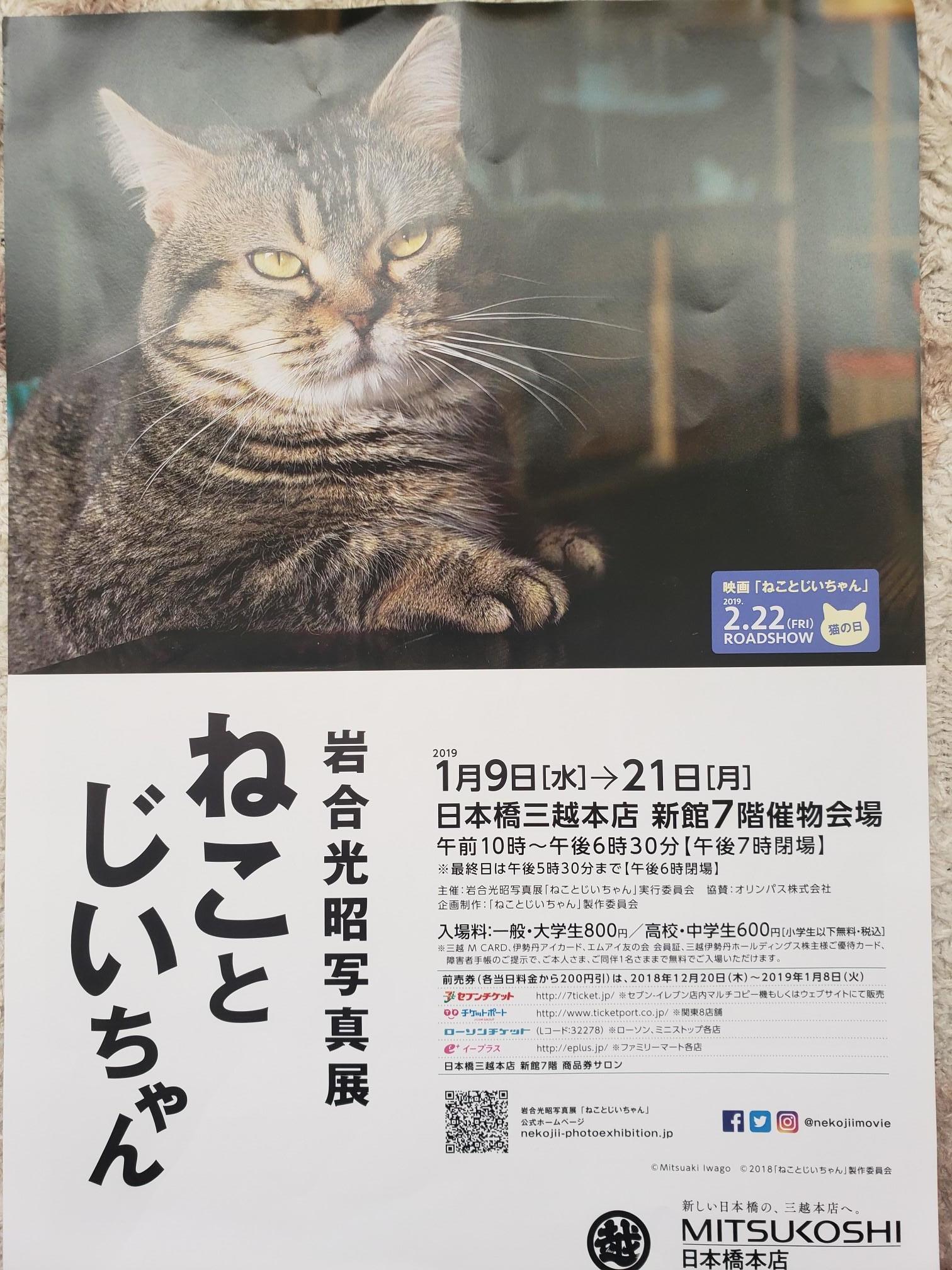
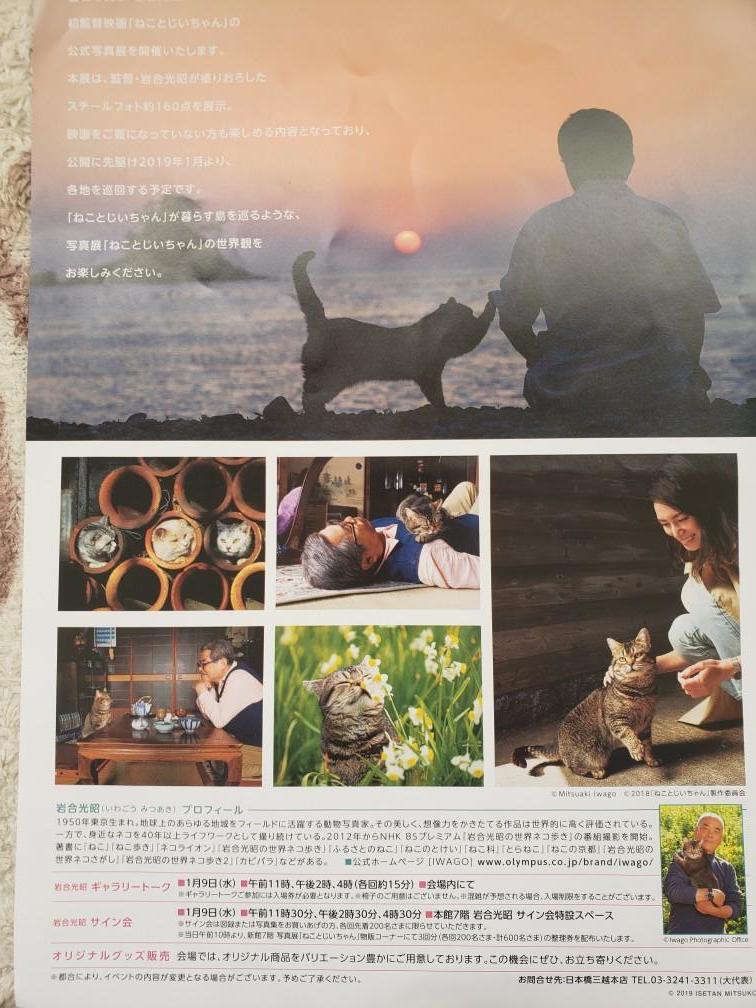
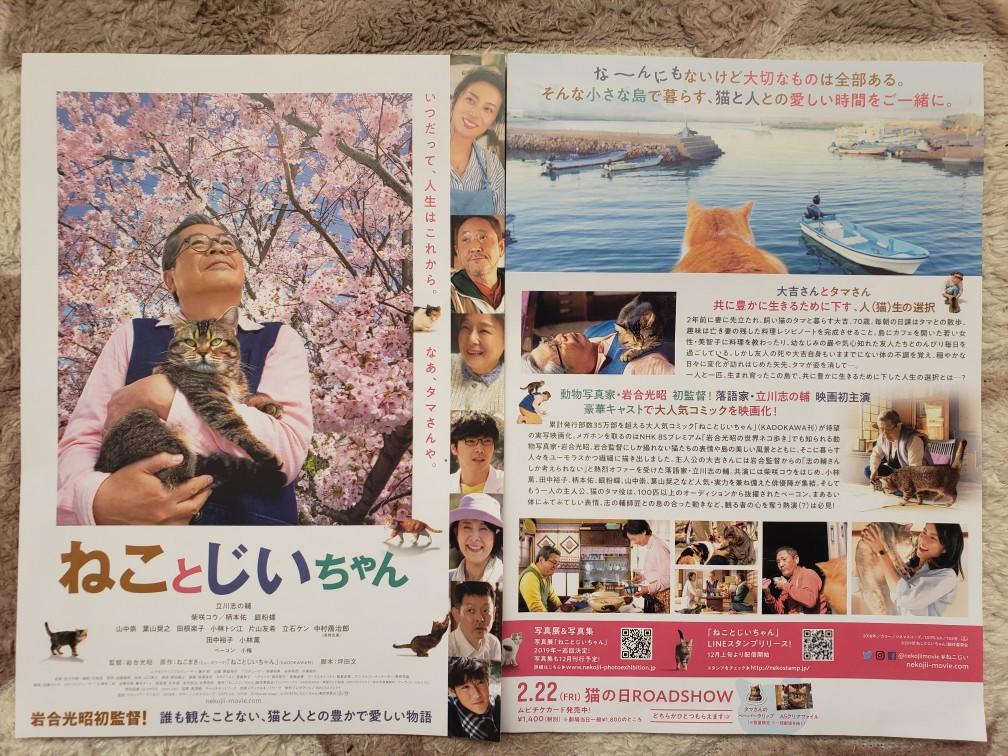
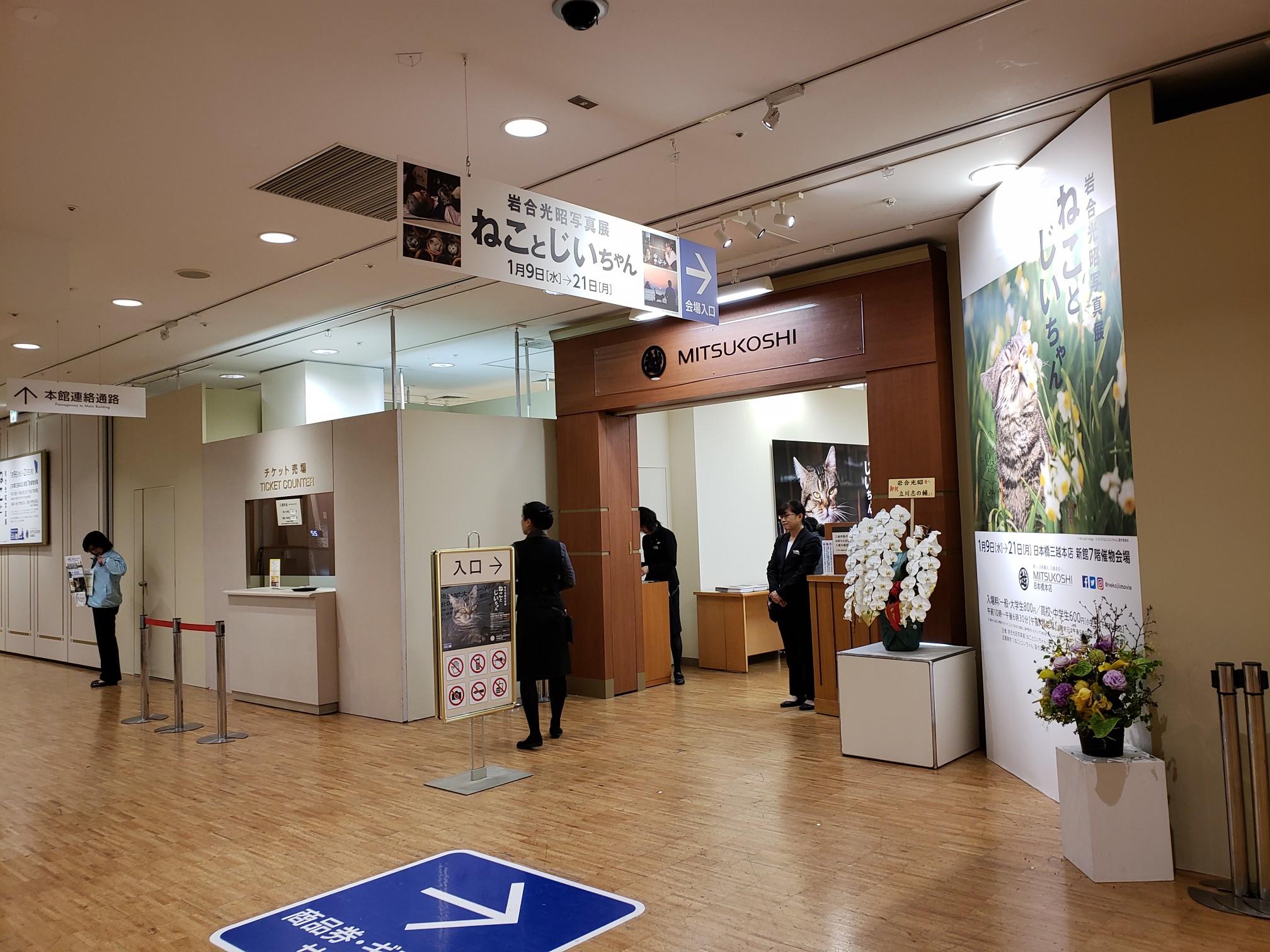

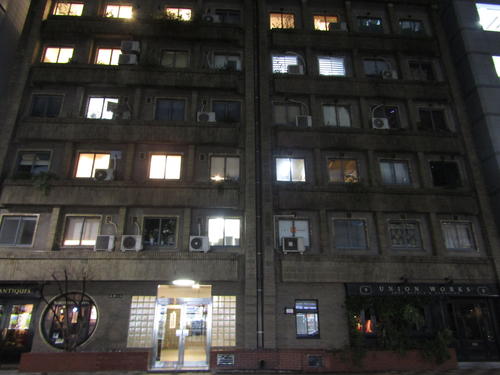
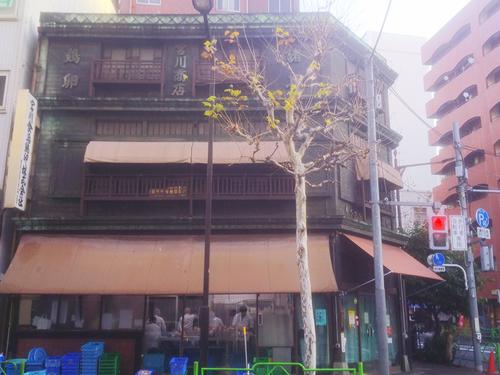
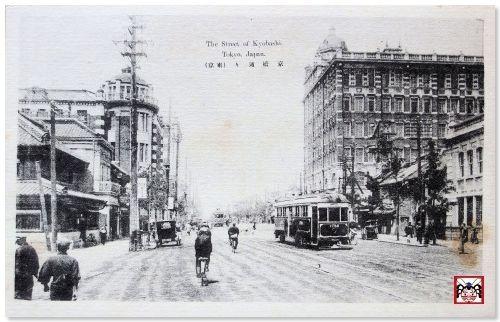
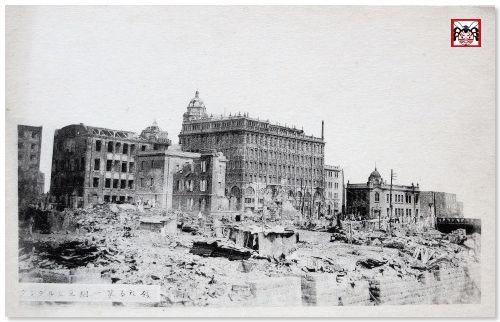
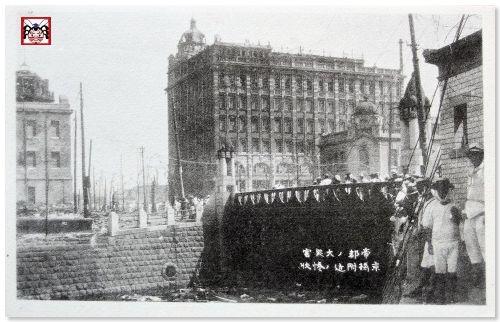
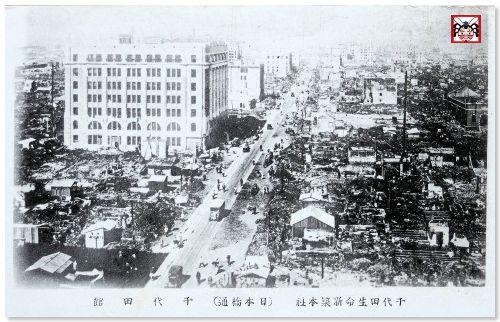
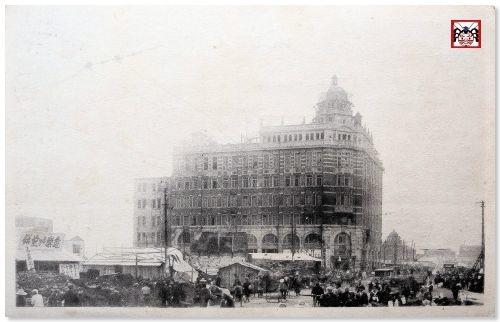
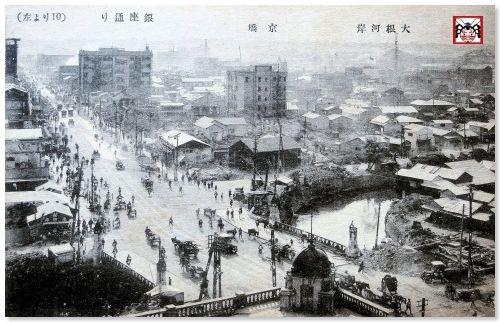
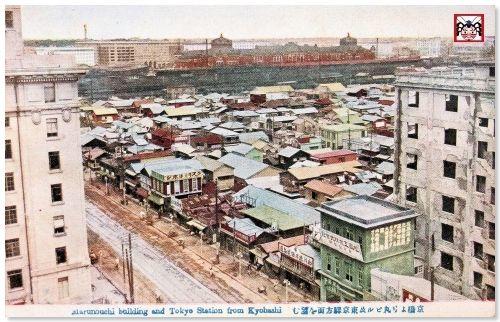 The building on the left is Katakura-kan, and the right is star pharmaceutical with a diagonal window. The Katakura-kan will continue to expand and grow, but the Hoshi Pharmaceutical building has been damaged and will be rebuilt after this. The Kajibashi-dori, which runs in the middle, will be widened by the earthquake reconstruction project.
The building on the left is Katakura-kan, and the right is star pharmaceutical with a diagonal window. The Katakura-kan will continue to expand and grow, but the Hoshi Pharmaceutical building has been damaged and will be rebuilt after this. The Kajibashi-dori, which runs in the middle, will be widened by the earthquake reconstruction project.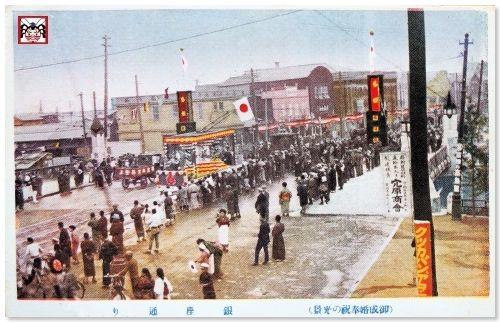

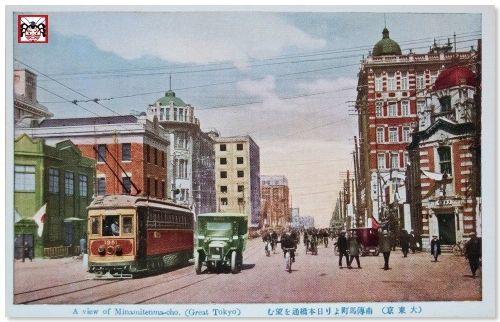
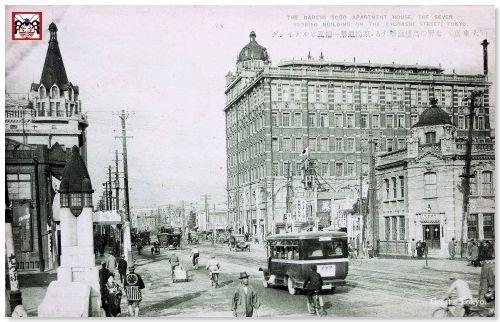
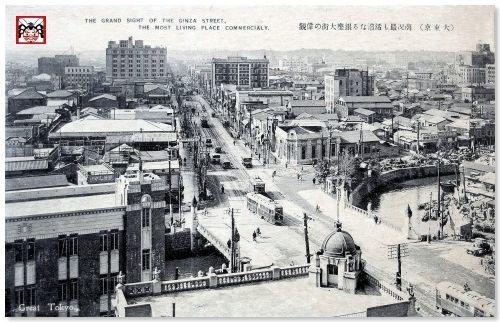
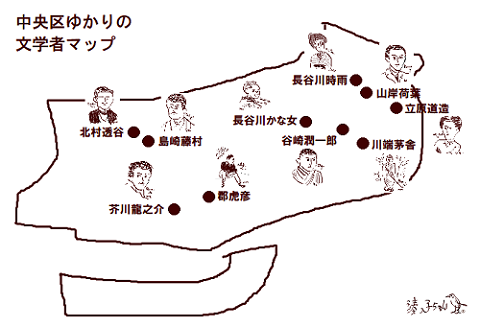
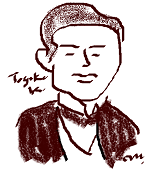
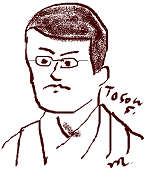
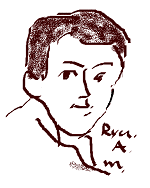
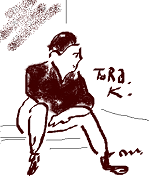
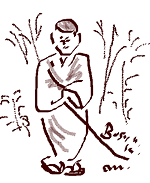
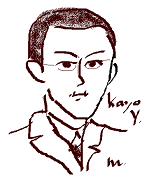
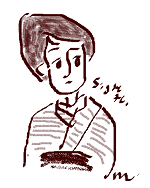
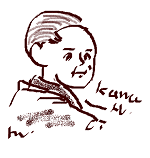
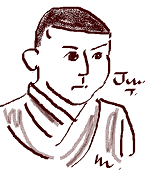
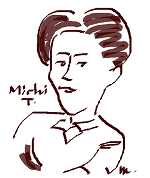
 He was born and raised in Chuo-ku and represents the times.
He was born and raised in Chuo-ku and represents the times.

